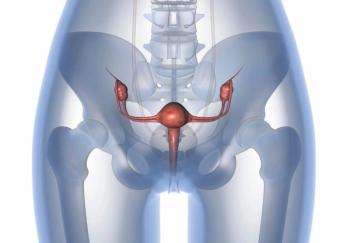
Niraparib Shows “Impressive” Survival Improvements in Advanced Ovarian Cancer
Maintenance therapy with niraparib may improve survival in patients with ovarian cancer.
Maintenance therapy with niraparib (Zejula) showed a significant progression-free survival (PFS) benefit for patients with newly diagnosed advanced ovarian cancer in the randomized phase 3 PRIMA trial, regardless of homologous recombination deficiency status. The
Niraparib, a PARP inhibitor, was
The PRIMA
The PRIMA trial met its primary endpoint, showing a 57% lower likelihood of disease relapse or death for patients with homologous recombination deficiency who received niraparib compared with placebo (HR=0.43; 95% CI, 0.31-0.59; P <0.001). The median PFS was more than 1 year prolonged for patients with homologous recombination deficiency who received niraparib compared with placebo (21.9 vs 10.4 months). In addition, a PFS benefit was seen in patients with homologous recombination deficiency, regardless of BRCA mutation status.
For the overall study population, a significant improvement in median PFS was still seen for patients who received niraparib compared with placebo (13.8 vs 8.2 months; HR=0.62; 95% CI, 0.50-0.76; P <0.001).
An exploratory analysis showed that in all predefined subgroups-including age, stage of disease, receipt of neoadjuvant chemotherapy, best response to platinum-based therapy, and homologous recombination status-a PFS benefit was seen with niraparib compared with placebo.
“It's a very impressive improvement in progression-free survival,” said Konstantin Zakashansky, MD, Director of Minimally Invasive Surgery, Mount Sinai Health System and Director of Gynecologic Oncology, Mount Sinai West, during an interview with CancerNetwork.
Though he was not involved in the PRIMA trial, he said that one challenge will be the current lack of standardized assay for homologous recombination deficiency testing.
The overall survival data from the trial are not yet mature, but so far show a trend toward better survival with niraparib. For the overall study population, 84% who received niraparib were still alive at 2 years compared with 77% who received placebo. For patients with homologous recombination deficiency, 91% who received niraparib were still alive at 2 years compared with 85% who received placebo.
As for safety, the majority of patients who received niraparib had a grade 3 or higher adverse event (70.5%) compared with 18.9% of patients who received placebo. Also, a higher proportion of patients who received niraparib discontinued treatment (12.0% vs 2.5%), had a dose reduction (70.9% vs 8.2%), or had a dose interruption (79.5% vs 18.0%) compared with those who received placebo. No treatment-related deaths occurred.
Niraparib was not the only PARP inhibitor to improve PFS in the maintenance setting for advanced ovarian cancer. Olaparib, as seen in the
As a result, Zakashansky, said, “The challenge is going to be figuring out which drug to go to.”
Newsletter
Stay up to date on recent advances in the multidisciplinary approach to cancer.















































































